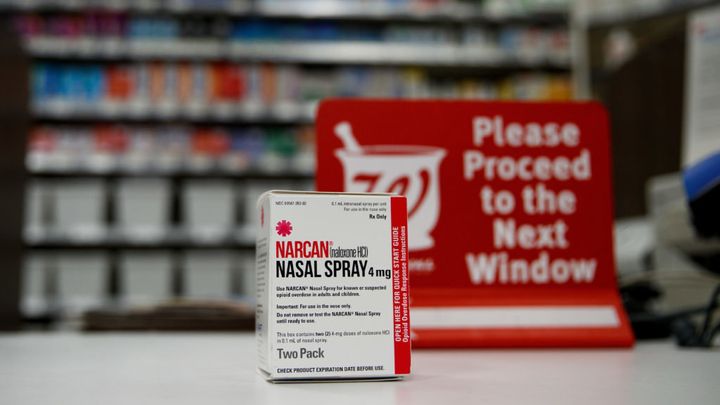
Despite laws in the majority of states allowing pharmacies to dispense the opioid overdose reversal antidote naloxone without a prescription, as well as Surgeon General Dr. Jerome Adams’ national advisory in April, recommending that more Americans learn how to use naloxone and carry it with them, new research indicates that it’s still not simple to buy the drug at pharmacies.
Naloxone has been available in California without a prescription since 2016, but when researchers called 1,147 pharmacies to ask for it, less than a quarter of the pharmacies said they would provide the drug without a prescription. Of the pharmacies that said they would dispense naloxone, only half had it in stock, according to research published in the Journal of the American Medical Association in November.
Chain pharmacies were significantly more likely to offer naloxone than independent pharmacies.
A different survey published in JAMA was conducted in Texas, where naloxone is available at pharmacies that have standing orders from prescribers to dispense it. Researchers surveyed 2,317 chain pharmacies with those standing orders and found that 84 percent said they would sell the drug without a prescription. Of those pharmacies, 69 percent said they had naloxone in stock.
Researchers in both studies cited lack of knowledge about the laws surrounding naloxone prescription, insufficient training for pharmacists and stigma as possible reasons that pharmacies aren’t dispensing the life-saving drugs, even though they’re legally allowed to do so.
“We need to continue our efforts to educate and support pharmacists.”
- Talia Puzantian, lead author of the California research
For example, at least 40 pharmacists in Texas thought that they could only dispense naloxone without a prescription if a patient was actively overdosing, which Kirk Evoy, lead author of the Texas research and a clinical assistant professor the University of Texas at Austin called “an especially alarming finding.” If someone overdoses and there’s no naloxone on hand, the correct response is to call 911, not travel to a pharmacy.
“We need to continue our efforts to educate and support pharmacists,” said Talia Puzantian, lead author of the California research and an associate professor of clinical sciences at Keck Graduate Institute School of Pharmacy and Health Sciences.
In California, some pharmacists weren’t stocking naloxone because few customers were requesting it and not many doctors were prescribing it, leading to a circular pattern of deprioritizing the drug.
Puzantian pointed to the pharmacists’ successful public health efforts to immunize their communities against the flu as a good model, and noted that because of their access to patient information about overdose risk, pharmacists were “well poised” to help fight the opioid epidemic.
Dr. Scott Gottlieb, the Food and Drug Administration commissioner, has called for a two-day advisory committee meeting to improve Americans’ access to naloxone in December.
In the meantime, 72,000 Americans died of drug overdoses in 2017, with nearly 50,000 of those deaths attributable to opioids, according to the U.S. Centers for Disease Control and Prevention.
Naloxone in pharmacies remains unreliable even in areas in which there’s been a concerted effort to expand access.
In New York City, where 1,374 people died of drug overdoses in 2016, the health department’s “I Saved A Life” naloxone awareness campaign directed New Yorkers to more than 700 pharmacies in the city that dispense naloxone without a prescription.
A New York Times examination into that list, however, found that that less than a third of those pharmacies had naloxone on hand and would distribute it without a prescription. The Times, which placed calls to all 720 pharmacies on the list in March, reported that there was widespread confusion among pharmacists about insurance and prescribing protocols.
Evoy said he viewed Texas’ comparatively better results both as a sign of positive steps are being taken to improve naloxone access, and also as a call to action for community pharmacies to better educate and support their staffs.
“There is still significant room for improvement,” he said.
